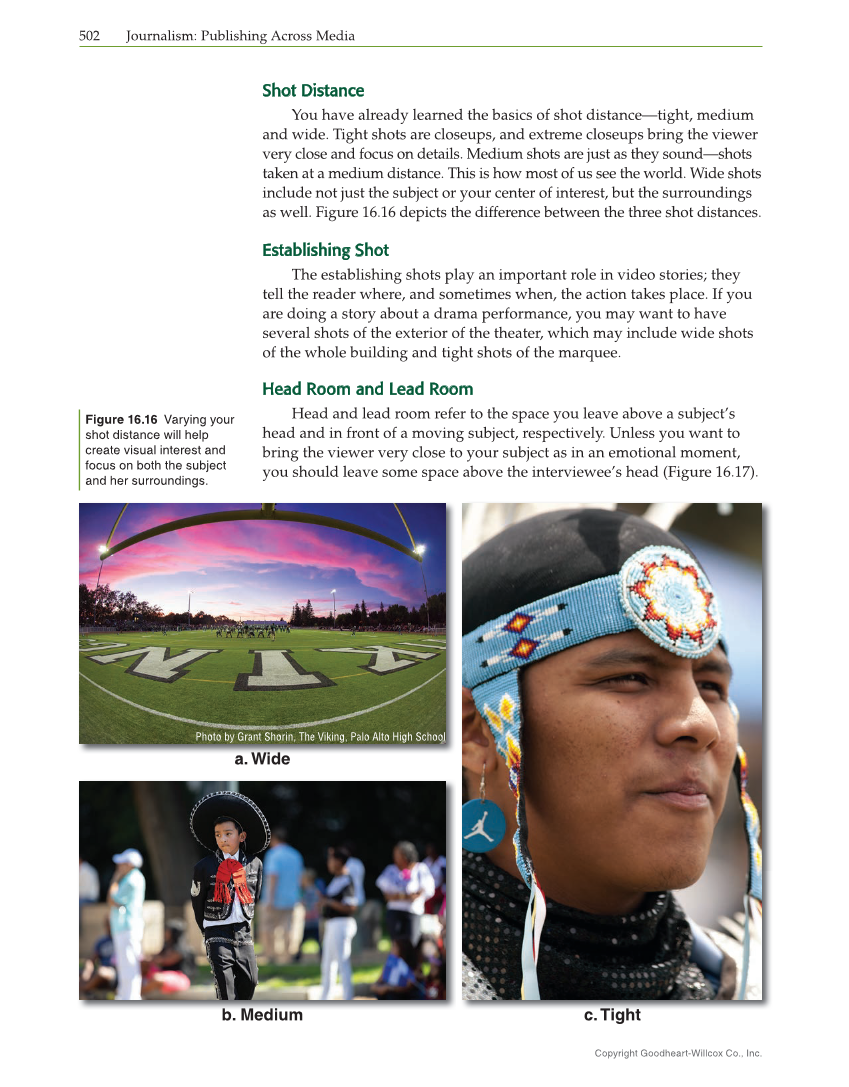Copyright Goodheart-Willcox Co., Inc. 502 Journalism: Publishing Across Media Shot Distance Shot Distance You have already learned the basics of shot distance—tight, medium and wide. Tight shots are closeups, and extreme closeups bring the viewer very close and focus on details. Medium shots are just as they sound—shots taken at a medium distance. This is how most of us see the world. Wide shots include not just the subject or your center of interest, but the surroundings as well. Figure 16.16 depicts the difference between the three shot distances. Establishing Shot Establishing Shot The establishing shots play an important role in video stories they tell the reader where, and sometimes when, the action takes place. If you are doing a story about a drama performance, you may want to have several shots of the exterior of the theater, which may include wide shots of the whole building and tight shots of the marquee. Head Room and Lead Room Head Room and Lead Room Head and lead room refer to the space you leave above a subject’s head and in front of a moving subject, respectively. Unless you want to bring the viewer very close to your subject as in an emotional moment, you should leave some space above the interviewee’s head (Figure 16.17). Figure 16.16 Varying your shot distance will help create visual interest and focus on both the subject and her surroundings. b. Medium c. Tight a. Wide Photo by Grant Shorin, The Viking, Palo Alto High School
